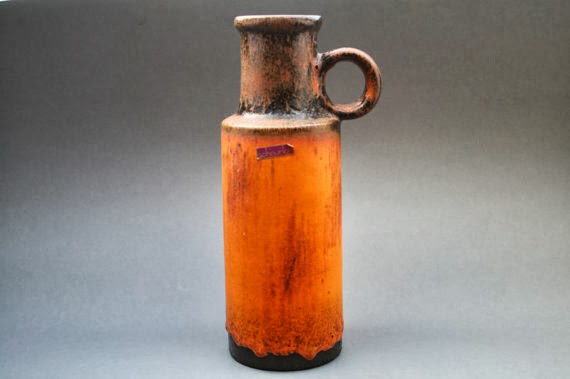The couple received separate studio training. Evelyn studied painting and drawing at the University of Michigan, and, after transferring to Wayne University, she received her BFA and MFA there. She brought to this design marriage an eye for composition and color, as well as considerable artistic ability, as evidenced by her textiles, wood carvings, enamels and mosaics.
Jerome enrolled in Wayne University in 1939 but did not complete his degree in art until he returned from service in the U. S. Air Force during World War II. He earned his MFA at Alfred University in 1952. He brought his talent as a ceramist to the partnership, as well as a keen business sense that promoted their studio output and limited production lines.
Perhaps unique to the Ackermans is their ability to move fluidly between abstract modernism and figurative stylization in their designs. This characteristic permeates all their work, but it is particularly apparent in their varied and prolific textile and ceramic production.
From mingei.org and ackermanmodern.com
(Technical issues resulted in search engine problems for almost
two years' worth of my older posts, so I am reposting the ones I consider most
informative. Though some of you have already viewed them, they will be new to
others of you. Originally posted 10/10/2010)
 |
| Ceramic vessels by Jerome Ackerman, 1953-54 These pieces were used as props in a brochure for Paul McCobb's Directional furniture group. ackermanmodern.com |
 |
| Woman vase by Jerome Ackerman, 1953 ackermanmodern.com |
 |
| Striped Candy Tree by Evelyn Ackerman, 1968 ackermanmodern.com |
Update: Evelyn Ackerman died on November 28, 2012.















































